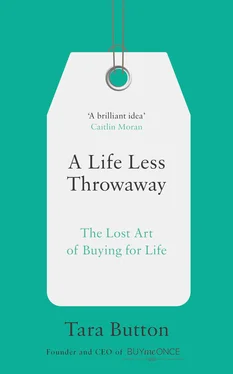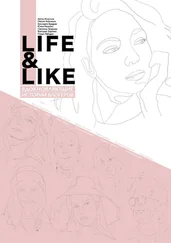Better fitness
Here, I think Christine means a product that is more ‘fit for purpose’ or more ‘convenient’, and I acknowledge that we want innovations to make products better at what they do.
However, a huge amount of ‘innovation’ around convenience is also change for change’s sake, and much of the innovation overcomplicates products that worked wonderfully in their simplicity. I have an engineer friend for whom this is a personal gripe: ‘A toaster doesn’t need to be able to do your tax return, it just has to make bread warm and a bit brown on each side.’ But often companies will add extra elements to products to justify a higher price tag and to make their product seem new and different from previous models.
My instinct is that most of the time these ‘innovations’ aren’t needed. To prove this to myself, I tried to imagine what my life would be like if all consumer product innovation had stopped in the Thirties, just after Christine’s book came out. Would life be unbearable, or even that different? Not at all. Almost everything in my home would be just as good, if not better, for being made in the Thirties. The only things I think I would miss are the kitchen appliances and boiler, the hoover, my laptop, phone, electric toothbrush and car. Around twelve items. That’s paltry when you think of all the products that have come out since the Thirties. How many of them truly do their jobs better?
HOW TO FIGHT PSYCHOLOGICAL OBSOLESCENCE
Recognise it and call it out
Christine might claim not to have encouraged change for change’s sake, but this is precisely what happened once the idea of psychological obsolescence took hold.
One of the little-understood effects of psychological obsolescence is described by Donald Norman, the author of The Design of Everyday Things . He explains in essence that designers are under pressure to bring out something that looks different every year, so they never get to perfect their creations and make them the best they can be. They have to start from scratch each time so that something different is seen on the shelves. 9
We can get designers out of this trap by recognising psychological obsolescence and calling it out when we see it. We should make a distinction between what is genuine progress (switching from a petrol to an electric car) and what is change for change’s sake (a car with a slightly wider grill, or ‘Seventies accents’), and shouldn’t give up on our products to buy new versions unless there is a compelling reason to do so. A 5 per cent better pillow or coffee machine isn’t good enough. If it’s 50–100 per cent better, I might consider it. If it’s solving a problem I actually have, I might be interested. Even if the new design is eco-friendlier, in almost all cases (highly polluting cars aside), it’s more environmentally sound to stick with what we have for as long as possible.
Find your ‘true taste’
As I write this, a decor magazine is urging me to kiss last year’s trends of zig-zag patterns and brushed metal goodbye and give my home a different look and feel with butterflies and folding furniture. But the new trends they’re offering are completely arbitrary and not necessarily a look that resonates with my personal aesthetic.
What you choose to bring into your home can have a profound effect on your mood, energy levels and the time you must spend keeping it in order. Unfortunately, when it comes to buying homeware, psychological obsolescence swings into full force. To counter it, it pays to know your true taste. You may know it already. If not, try the exercise below.
exercise
IDENTIFYING YOUR HOMEWARE AESTHETIC
This exercise will take at least twenty minutes, so make sure you have enough time.
• Grab a notebook or open a computer document. Make two columns: Like and Dislike .
• Now go online and search for images of interiors. Don’t go to an interior magazine, but somewhere like Pinterest, Instagram or Google images where you can see a mix of pictures from all eras, from the Tudors to the present day.
• Spend the first five minutes just seeing the colours in the pictures, nothing else. Start jotting down those you do and don’t like in an interior setting and any colour combinations you like.
• Then spend five minutes on textures and patterns – for example, natural wood, clapboard, granite and polka dots.
• Now spend five minutes on styling – for example, window shutters and jugs of flowers.
• Spend the last five minutes on types of furniture and appliances – for example, wing chairs, log coffee tables and retro fridges.
Keep this list handy or go one step further and make a mood board to arm yourself against fads and future-proof your homeware purchases. ( For detailed advice on how to find long-lasting homeware, see Chapter 13. )
Resist the lure of the latest technology
There is a sort of ‘natural’ obsolescence that occurs when a new object comes to market and is so good and useful that no one wants the old version. The iPod killed the CD, the CD killed the cassette and the cassette killed the record for everyone apart from hipsters. It’s like a technological survival of the fittest.
It’s not helpful or realistic to expect the world to stop inventing. Past innovations have meant that we live longer now, get to experience more things, travel more widely and have a broader understanding of the world and the people in it. Innovation may even lead to our salvation, with inventions such as Tesla’s solar roof tiles. But it’s also left us with a poisoned and polluted planet and allowed us to harm each other at an increasing rate and distance.
It’s worth questioning our upgrading impulses and thinking through the implications of it. Technology companies turn to psychological obsolescence to make us upgrade whether the new product is significantly better or not. There’s no real reason why Apple should launch new products every year, but mostly we accept this unquestioningly. Start to question it. This is vital, because the lifespans of these products are now shorter than ever, and electrical waste is growing at a scary rate. Eight per cent of our household waste is now electronic 10and 42 million tons of it was generated in 2014. 11Much of it still works perfectly. It’s estimated that if we sold the items instead of trashing them, people in the UK would make £220 million and people in the USA would make around $1 billion. 12It isn’t just that many of these products are toxic once they begin to rot in the ground, but also that they have valuable and rare materials still inside them. These are lost to us forever, buried underneath a town’s worth of carrot peelings, chicken bones and poopy nappies.
In one episode of the TV series What to Buy and Why , 13my engineer friend Tom Lawton goes to a trash heap and picks out a pair of earphones, a vacuum cleaner and a microscooter. Within a couple of minutes, he finds the problems and fixes them easily. The items are worth several hundred pounds.
If we could just make a clone army of Toms and set them up fixing the world’s electronics, all would be well. One Tom in every town. When I suggested this to him, he laughed and replied, ‘There used to be – tinkers.’
These people are becoming rarer, but they do exist, and if we start making the effort to repair rather than replace, there will soon be many more of them. We can also set up petitions and lobby the government to help us repair and reuse. The state runs our recycling facilities because it sees the benefits. There’s no reason why it shouldn’t run a reuse facility as well.
Governments can help in other ways too. For example, Sweden has reduced the tax on repairing to try and encourage people to go down that route.
Читать дальше












